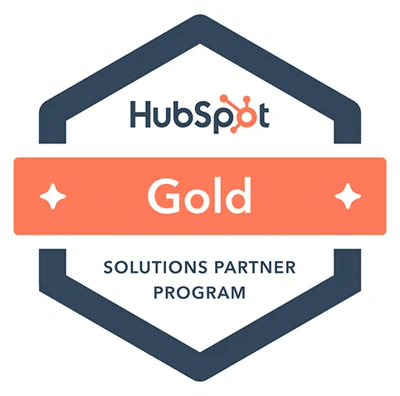Listen to the Blog
Because if your team doesn’t understand what an MQL is, your CRM isn’t helping.
HubSpot gives you a powerful way to track your funnel: Lifecycle Stage.
But most teams either:
- Don’t update it consistently.
- Confuse it with Lead Status.
- Or never touch it again after setup.
The result? Broken automation, poor segmentation, and lost revenue.
Here’s how to build a transparent, scalable lifecycle framework that supports marketing and sales alignment.
What Is the Lifecycle Stage in HubSpot?
It’s a default contact property that indicates where someone is in their journey, from a stranger to a customer.
Common stages:
- Subscriber
- Lead
- MQL (Marketing Qualified Lead)
- SQL (Sales Qualified Lead)
- Opportunity
- Customer
- Evangelist
- Other
But not every business needs all of these. That’s where customisation comes in.
Step 1: Define Your Lifecycle Stages Clearly
Use terms your team understands. Example framework for B2B SaaS:
- Lead – Filled out a form or gave you basic info
- MQL – Meets your ideal profile + shows intent (visited pricing, downloaded guide)
- SQL – Accepted by sales for follow-up
- Opportunity – In a pipeline with a deal created
- Customer – Closed-won
- Evangelist – Referred others or gave a testimonial
Document what qualifies a contact to move between each stage.
Step 2: Use Lead Status for Sub-Stages
Lifecycle Stage = Funnel position
Lead Status = Sales status within that stage
Example for SQL:
- New
- Attempted Contact
- Connected
- Disqualified
This adds granularity without cluttering your lifecycle model.
Step 3: Automate Stage Movement With Workflows
HubSpot Workflows can:
- Set MQL when someone downloads gated content + matches ICP
- Move to SQL when sales assign or contact them
- Set Opportunity when a deal is created
- Set Customer when the deal closes
Always include exceptions and requalification paths.
Step 4: Align Marketing + Sales With Shared Definitions
Have your teams agree on:
- What qualifies as MQL?
- When does a lead become SQL?
- What makes someone an Opportunity?
Write this down. Review it quarterly. Train new hires on it.
It’s not just a CRM setup—it’s an alignment tool.
Step 5: Build Lifecycle-Based Reports
In HubSpot, use this setup to track:
- Conversion rates between stages
- Time spent in each stage
- Stages where leads drop off
- Stage-to-revenue contribution
This is the foundation for real revenue forecasting and optimisation.
Final Thought
Your CRM is only as good as your definitions. A scalable Lifecycle Stage framework provides clarity, accountability, and insight across every team: marketing, sales, and beyond. Set it once. Align often. Optimize forever.




.webp)



%201.png?width=1016&height=912&name=image%20(54)%201.png)